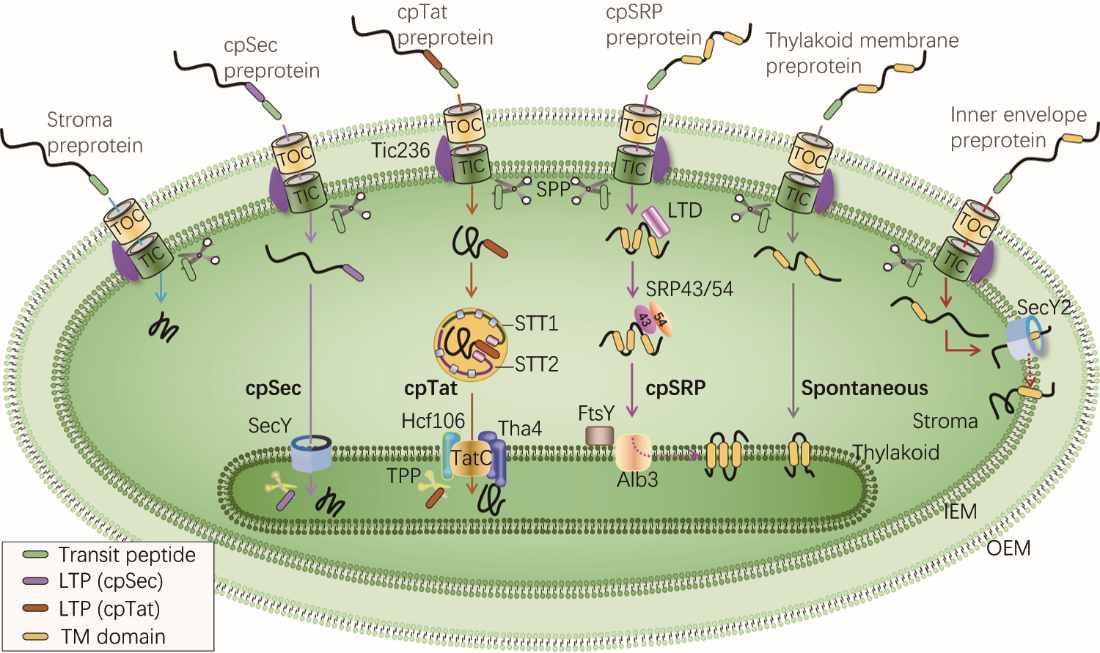
Chloroplasts of higher plants are essential for photosynthesis and also play critical roles in many important physiological processes, such as lipid and amino acid biosynthesis, cell signaling, and plant immune response. Chloroplasts are believed to have originated from an ancient cyanobacterium engulfed by a eukaryotic cell. During this event, most genes of the endosymbiont were either lost or transferred to the host nucleus, while only ~100 of these genes were retained in the chloroplast genome. Thus ~3000 nuclear-encoded proteins synthesized in the cytosol must be imported into the chloroplasts. One of the remarkable features of chloroplasts is their highly complex structure, with multiple suborganellar membranes (outer envelope, inner envelope and thylakoid membranes) which delineate three separate compartments (intermembrane space, stroma, and thylakoid lumen). This complex structure of chloroplasts raises key questions for protein import and translocation. How are chloroplast proteins translocated across these membranes and targeted to the correct sub-compartments? How do different translocation machineries specifically distinguish their substrates? These are highly challenging problems. In recent years, considerable progress has been achieved in the identification and functional characterization of new factors involved in chloroplast protein sorting, such as STIC1/2, LTD and STT1/2, which provides important insights into the molecular mechanisms of this process.
In this Opinion article, we first briefly summarize the current knowledge about distinct pathways for targeting both nuclear- and chloroplast- encoded proteins to their correct locations within chloroplasts. Second, we overview the recent advances on the identification and functional characterization of novel components of intra-chloroplast sorting. Finally, we discuss how substrate proteins are recognized by different translocation pathways and how they are regulated. We also highlight the recently proposed mechanism of LLPT in intra-chloroplast cargo sorting, and propose that LLPT may be a conserved and efficient mechanism for driving organelle protein sorting and organelle biogenesis.
This work entitled “Protein sorting within chloroplasts” has been published in Trends in Cell Biology on October 26, 2020. Professor Xiumei Xu is the first author, and Professor Lixin Zhang is the corresponding author. This study was supported by the National Natural Science Foundation of China (31700204; 31130059), Outstanding Talents Fund of Henan University, State Key Laboratory of Biocatalysis and Enzyme Engineering of Hubei University.
Paper link: https://www.cell.com/trends/cell-biology/fulltext/S0962-8924(20)30191-4
DOI: https://doi.org/10.1016/j.tcb.2020.09.011



